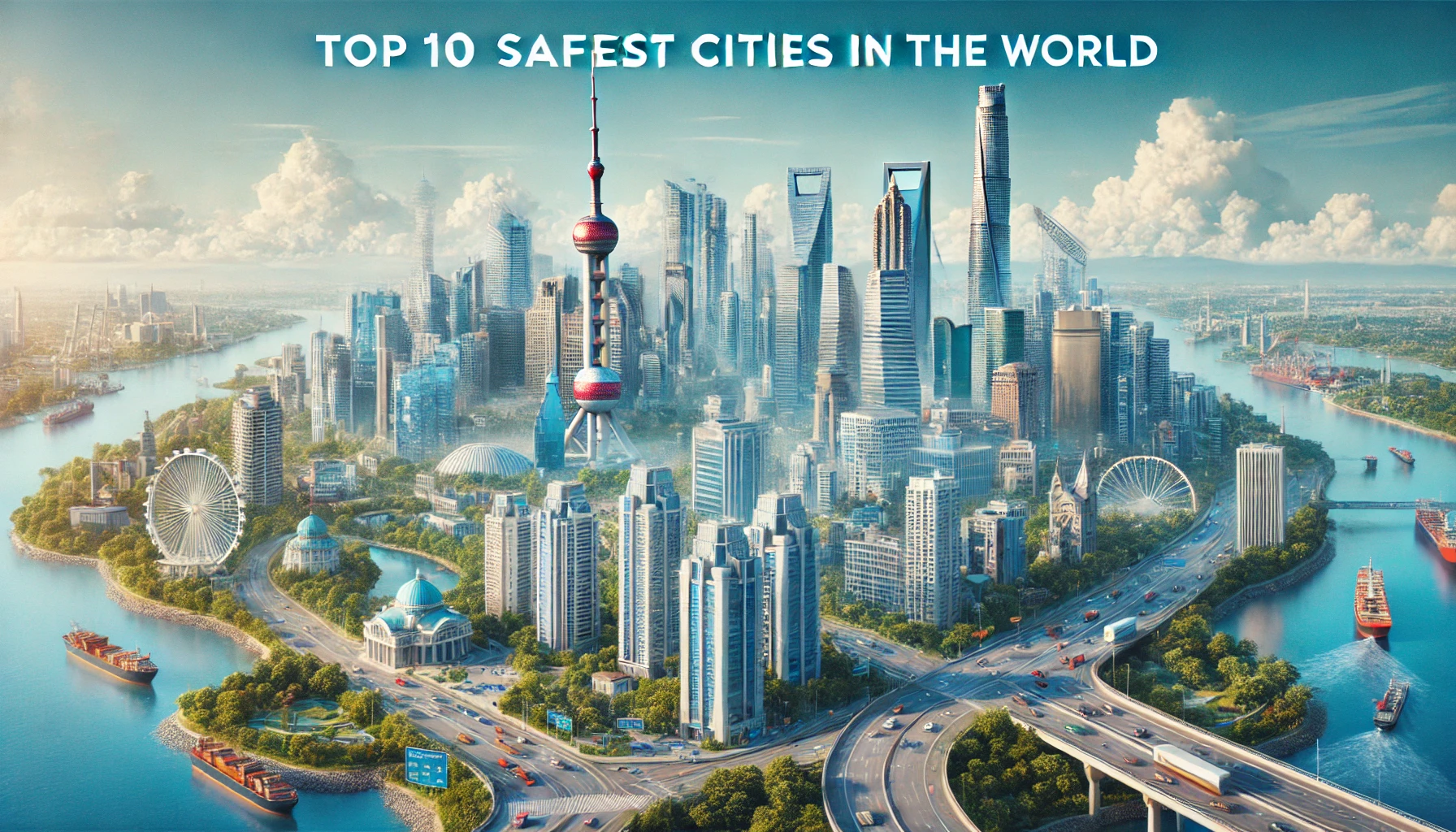
In an increasingly interconnected world, safety has become a paramount concern for both residents and travelers alike. This article explores the top 10 safest cities in the world, offering insights into what makes these urban centers stand out in terms of security, quality of life, and peace of mind.
City safety is a complex issue that encompasses various factors, including crime rates, health security, digital safety, infrastructure resilience, and environmental safety. The cities featured in this list excel across these dimensions, creating environments where residents and visitors can thrive with minimal concerns about their personal safety.
Let's explore the top 10 safest cities in the world, each offering a unique blend of security measures, cultural richness, and quality of life.
Tokyo, the bustling capital of Japan, stands as a paragon of urban safety. With its low crime rates, efficient public transportation, and advanced technological infrastructure, Tokyo offers a secure environment for its massive population. The city's culture of respect, strong community bonds, and vigilant law enforcement contribute to its top-ranking safety status. Despite its size and density, Tokyo maintains cleanliness and order, making it a model for megacities worldwide.
Singapore, a city-state known for its stringent laws and efficient governance, secures the second spot on our list. Its comprehensive approach to safety encompasses low crime rates, excellent healthcare, and robust digital security measures. Singapore's smart city initiatives, including extensive camera networks and data-driven policing, further enhance its safety profile. The city's clean streets, reliable public services, and strong emphasis on education contribute to a high quality of life and a secure urban environment.
Osaka, Japan's vibrant port city, combines urban dynamism with impressive safety standards. Known for its friendly locals and bustling food scene, Osaka maintains low crime rates through community-oriented policing and strong social cohesion. The city's efficient emergency services, well-maintained infrastructure, and cultural emphasis on collective responsibility contribute to its high safety ranking. Osaka's balance of modern development and traditional values creates a secure environment for residents and visitors alike.
Amsterdam, the capital of the Netherlands, is renowned for its progressive policies and high quality of life, which contribute significantly to its safety. The city's well-planned urban design, extensive bicycle infrastructure, and efficient public transportation system reduce traffic-related risks. Amsterdam's community policing approach, coupled with social programs addressing root causes of crime, ensures a safe environment. The city's open and tolerant culture also promotes social harmony, making it a secure destination for its diverse population and millions of annual visitors.
Toronto, Canada's largest city, is a multicultural metropolis that prioritizes safety through inclusive policies and community engagement. The city's low crime rates are attributed to effective law enforcement, strong social services, and a culture of diversity and acceptance. Toronto's well-maintained public spaces, reliable healthcare system, and focus on mental health support contribute to its overall safety. The city's resilience planning and smart city initiatives further enhance its capacity to manage and mitigate various urban risks.
Washington D.C., the capital of the United States, combines historical significance with modern urban safety measures. The city's unique status results in multiple layers of law enforcement, contributing to its high safety ranking. Washington D.C.'s extensive emergency preparedness plans, advanced surveillance systems, and well-coordinated security agencies ensure a safe environment for residents and the millions of tourists who visit its iconic landmarks annually. The city's ongoing urban renewal projects and community policing initiatives have significantly improved safety across various neighborhoods.
Copenhagen, the capital of Denmark, is celebrated for its high quality of life and commitment to sustainability, both of which contribute to its impressive safety record. The city's extensive cycling infrastructure, pedestrian-friendly streets, and efficient public transportation reduce traffic-related risks. Copenhagen's low crime rates are attributed to strong social welfare programs, effective community policing, and a culture of trust and civic responsibility. The city's focus on environmental safety and climate resilience further enhances its overall security, making it a model for sustainable urban living.
Seoul, the capital of South Korea, combines technological innovation with traditional values to create a remarkably safe urban environment. The city's extensive network of CCTV cameras, smart city technologies, and efficient public transportation system contribute to its high safety ranking. Seoul's low crime rates are supported by community-oriented policing, strong social cohesion, and a culture that values collective harmony. The city's advanced disaster management systems and commitment to continuous improvement in urban safety make it a secure and resilient metropolis.
Melbourne, Australia's cultural capital, is renowned for its livability, which is closely tied to its high safety standards. The city's well-planned urban design, extensive parks and public spaces, and community-focused policies contribute to a safe and inclusive environment. Melbourne's effective law enforcement, coupled with strong social services and multicultural harmony, results in low crime rates. The city's commitment to road safety, mental health support, and disaster preparedness further enhances its overall security, making it a safe haven for its diverse population.
Stockholm, the capital of Sweden, rounds out our top 10 with its impressive blend of historical charm and modern safety measures. The city's low crime rates are a result of progressive social policies, effective law enforcement, and a strong sense of community. Stockholm's well-maintained infrastructure, reliable public services, and focus on environmental sustainability contribute to its high safety ranking. The city's innovative approach to urban planning, including efforts to reduce traffic and promote walking and cycling, enhances both safety and quality of life for its residents and visitors.
Several key factors contribute to making these cities exceptionally safe:
These top 10 safest cities demonstrate that urban safety is achievable through a combination of effective governance, community engagement, and technological innovation. While no city is entirely free from challenges, these exemplary urban centers provide models for others to emulate in the pursuit of creating safer, more livable cities for all.
As we continue to face global challenges, from climate change to public health crises, the importance of urban safety and resilience cannot be overstated. By learning from these cities and implementing similar strategies, we can work towards a future where more cities around the world can offer their residents and visitors the peace of mind that comes with living in a truly safe urban environment.
Author
Michael Mammela is a contributor to BestCityIndex with expertise in urban development and global city trends.
Stay updated with our latest insights and city rankings.


Introduction:The aroma of aged wheels, bubbling fondue, and freshly baked bread for cheese lovers, Europe is a true paradise. Here are five cities where cheese...

Date: 5 August 2025Source: AFP, Reuters, Local Weather AuthoritiesReading Time: 3 minutesIntroductionIn just one week, Asia has faced two stark climate...

Moving to Europe: Pros and Cons by Country for Work, Retirement, Education & Lifestyle Part 1.Moving from the United States to Europe is an exciting...